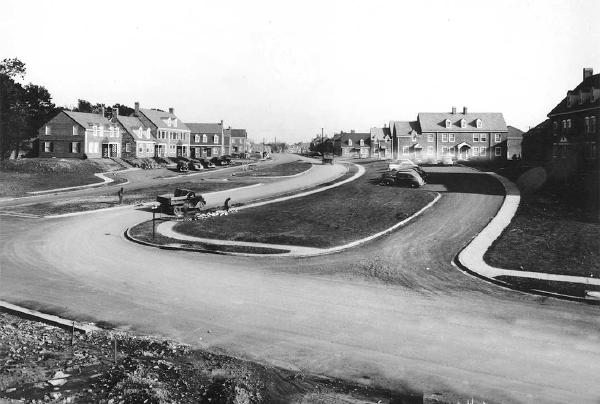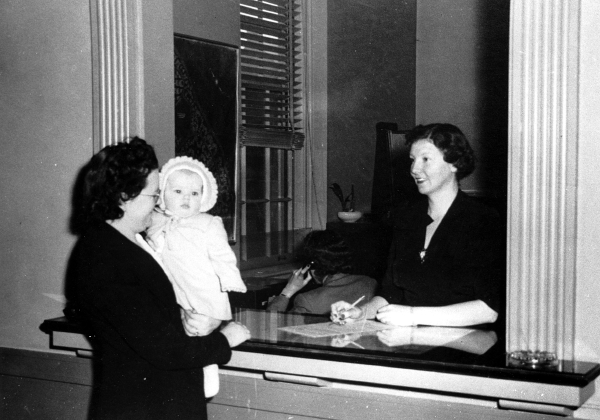This 75th Anniversary lookback article originally ran in the November 2018 edition of the All Fairlington Bulletin.
When people who lived or grew up in Fairlington in the 1940’s and 1950’s visit the neighborhood today, they often comment that several things surprise them: First, that despite the pressures of urban density and infill, the community is still here with building exteriors essentially unchanged. Second, that the landscape, which was once so bare, is now so lush with trees, shrubs, and plants. And third, that the prices of Fairlington homes are so high.

34th and 36th Streets South, 1943. Courtesy National Archives
Their surprise is understandable. In 1943, one-bedroom apartments in Fairlington rented for $58.50 – $69.50 per month; two bedrooms were $68.50 – $79.50; and three bedrooms were $79.50 – $89.50. Some 30 years later in 1972, the first converted condominium homes sold for between $19,000 – $44,500, depending on size, with 5% down and 25-30 year mortgages at 7.5-8.75%.1 Today’s Fairlington home prices are visible each month in the All Fairlington Bulletin.

Paying the rent at the Administration Building, 4800 South 31st Street, c. 1945. Courtesy Arlington County Public Library
Of course, the cost of living was substantially different at both points. The Federal minimum wage was $.30 per hour in 1943; in 1972, it was $2.00; today it is $7.25.2 One hundred dollars in 1943, adjusted for inflation, was worth $241.62 in 1972 and is worth $1,448.50 today.3
Food prices, which had risen steeply following the attack on Pearl Harbor and the United States’ entry into World War II, were stabilized with economic and price controls and rationing, but continued to rise with the demands of the Armed Services. Fairlington’s first residents found themselves paying some 20% more in 1943 than in 1942 for commodities like flour, corn meal, rice, and soda crackers. Compared to pre-war years, meats cost some 34% more in 1943, dairy products nearly 21% more, and fresh fruit and vegetables some 27% more.4
Surrounded by development and change, with costs of housing and living rising, one thing has remained constant. Fairlingtonians continue to value their homes and their lives in our unique and historic community.
-
Catherine B. Fellows, Fairlington at 50, Fairlington Historical Society, 2003 ↩︎
-
U.S. Department of Labor, Bureau of Labor Statistics, Federal Minimum Wage Rates Under the Fair Labor Standards Act ↩︎
-
American Institute for Economic Research, Cost of Living Calculator (aier.org) ↩︎
-
U.S. Department of Labor, Bureau of Labor Statistics, Bulletin 799, Retail Prices of Food 1942 and 1943 ↩︎